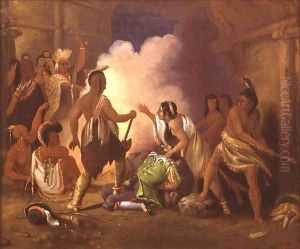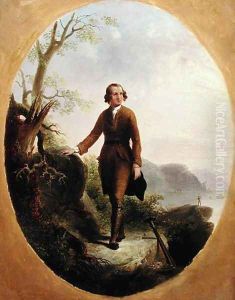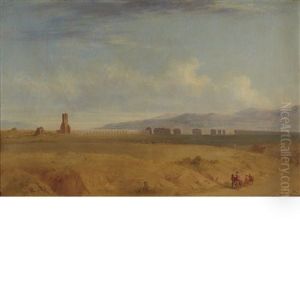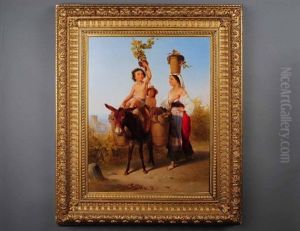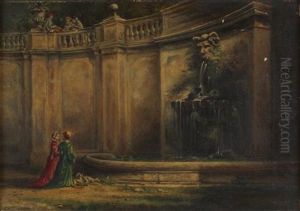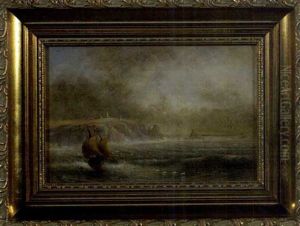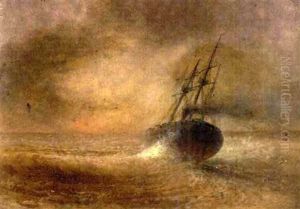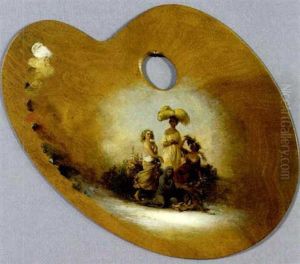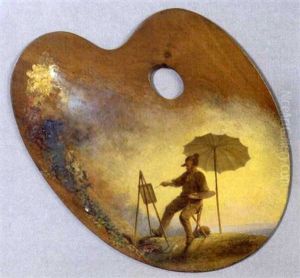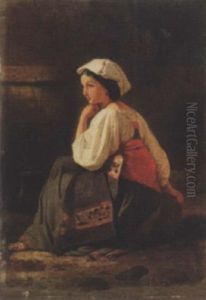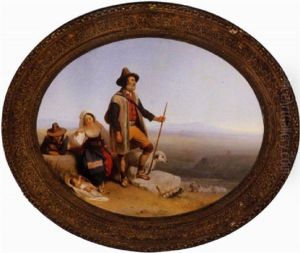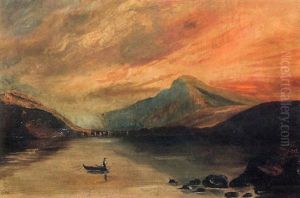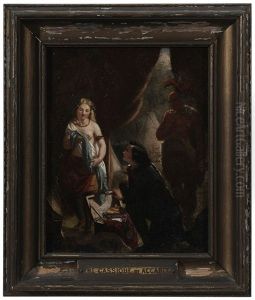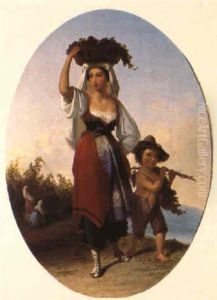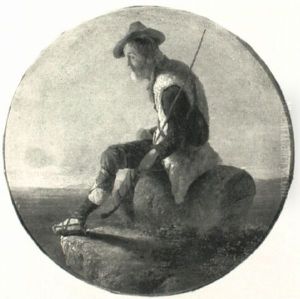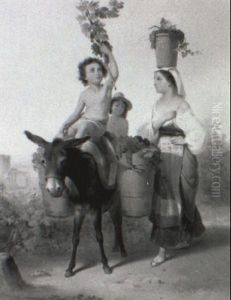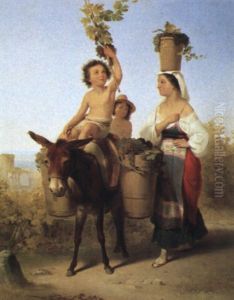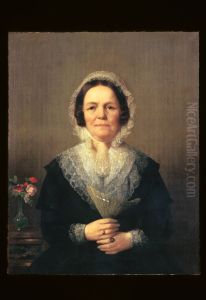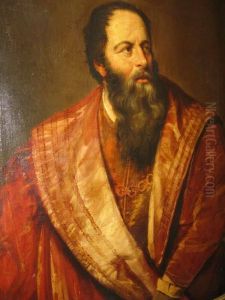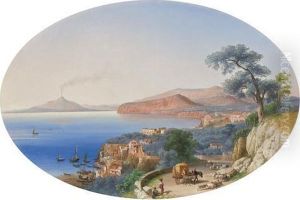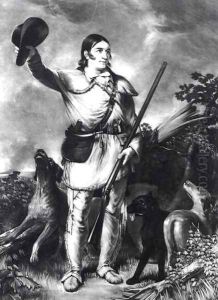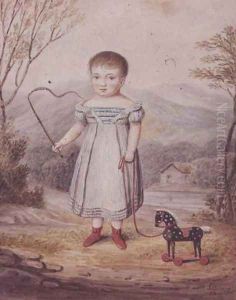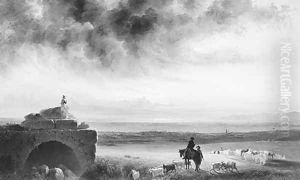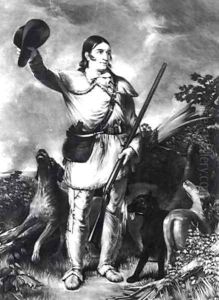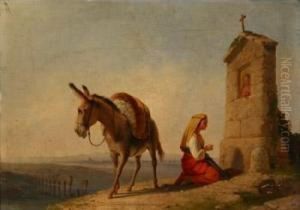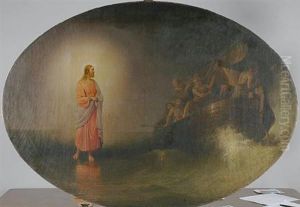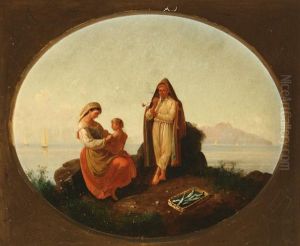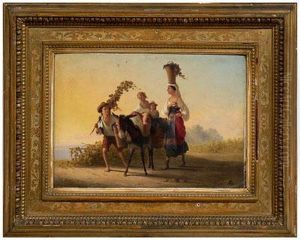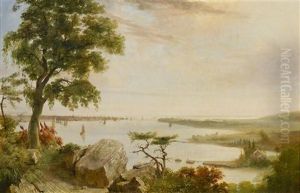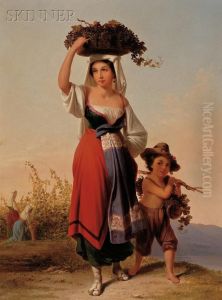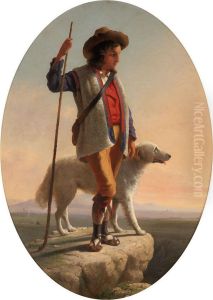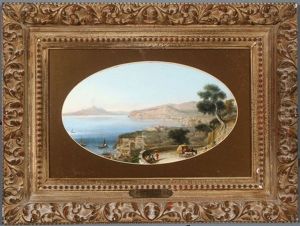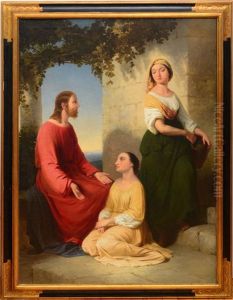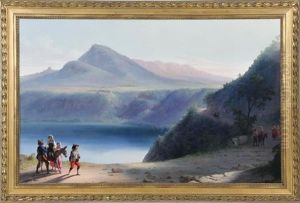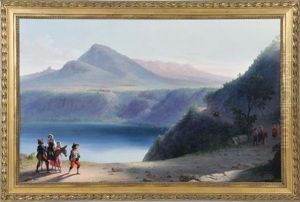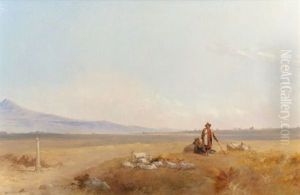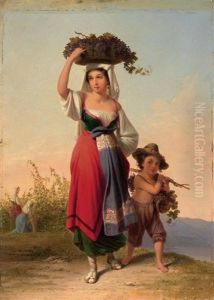John Gadsby Chapman Paintings
John Gadsby Chapman was an American painter born on December 3, 1808, in Alexandria, Virginia. He is best known for his historical paintings and portraits. Chapman embarked on his artistic journey at a young age, showing a keen interest in drawing and painting. His early education in the arts was primarily self-taught, later supplemented by formal studies in the United States and Europe.
Chapman's work spanned various genres, including landscapes, but he gained significant recognition for his historical scenes and portraits. One of his most celebrated works is 'The Baptism of Pocahontas', which was completed in 1840. This painting was commissioned as part of a series of works to adorn the United States Capitol rotunda in Washington, D.C. It depicts the baptism of Pocahontas in Jamestown, Virginia, reflecting Chapman's interest in American history and his ability to convey complex narratives through his art.
Throughout his career, Chapman also contributed to the field of illustration, producing works for books and periodicals. His illustrations for Harper's Magazine are among his notable contributions to the medium. Chapman's work as an illustrator further showcased his versatility and skill in capturing the essence of a story through his visuals.
In addition to his painting and illustration work, Chapman authored a book titled 'The American Drawing Book', published in 1847. This instructional guide was intended for the general public and aspiring artists, offering lessons on drawing, perspective, and other fundamentals of art. The book was widely popular and played a significant role in art education in the United States during the 19th century.
John Gadsby Chapman spent his later years in Europe, where he continued to paint and exhibit his work. He died on November 28, 1889, in Rome, Italy. His legacy is preserved through his contributions to American art, particularly his historical paintings that capture pivotal moments in the country's early history. Chapman's work remains a testament to his skill as a painter and his dedication to depicting the American experience.
